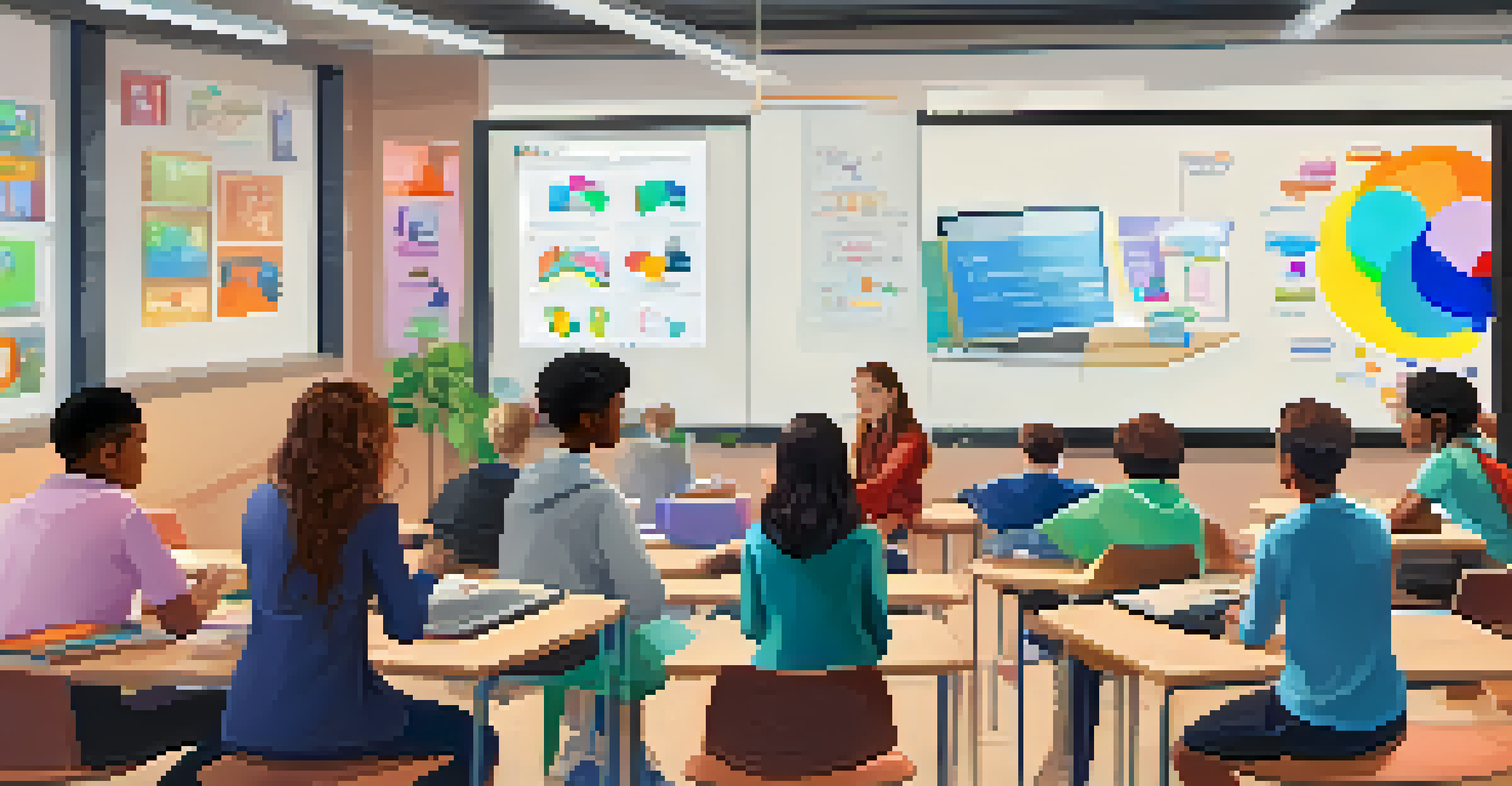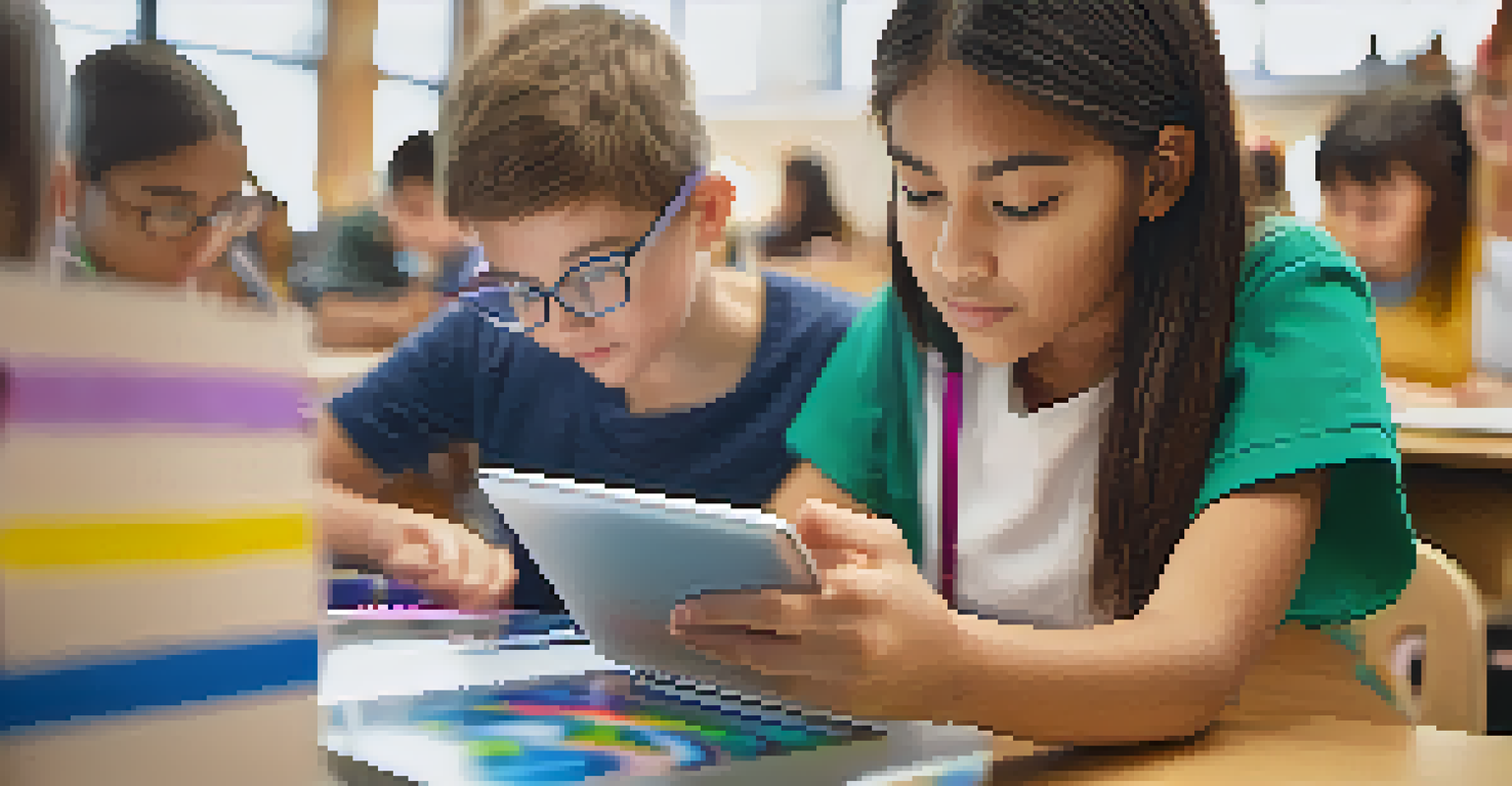Personalized Learning Paths in Online Education Systems

Understanding Personalized Learning Paths in Education
Personalized learning paths are tailored educational experiences designed to meet individual student needs. This approach recognizes that each learner has unique strengths, weaknesses, and preferences, allowing for a more effective and engaging educational process. By customizing the curriculum, educators can ensure that students progress at their own pace, enhancing their understanding and retention of the material.
Personalized learning is not just a trend; it's a revolutionary approach that recognizes the unique potential of every student.
For instance, if a student excels in mathematics but struggles with reading, a personalized learning path might provide advanced math challenges while offering additional support in reading skills. This targeted approach not only boosts confidence but also fosters a love for learning, as students feel more in control of their educational journey. Ultimately, personalized learning paths aim to create a more inclusive environment where every student can thrive.
In online education systems, implementing personalized learning paths often involves the use of technology, such as learning management systems (LMS) that adapt content based on student performance. By analyzing data on each learner's progress, these systems can suggest resources and activities tailored to their needs, making education more dynamic and responsive.
The Importance of Flexibility in Learning Experiences
Flexibility is a cornerstone of personalized learning paths, allowing students to choose how and when they engage with their studies. This adaptability is especially crucial in online education, where learners often juggle various responsibilities, such as work or family commitments. By providing options for self-paced learning, educators can help students maintain motivation and reduce stress.

Imagine a busy working parent who wants to further their education but can only dedicate time during evenings or weekends. With personalized learning paths, they can access course materials at their convenience, engage in interactive activities, and complete assessments when it suits them best. This level of flexibility not only enhances the learning experience but also helps students achieve a better work-life balance.
Personalized Learning Enhances Engagement
Personalized learning paths align educational materials with student interests, boosting motivation and commitment.
Furthermore, the ability to revisit materials and adjust learning strategies based on ongoing assessments empowers students to take ownership of their educational journey. This self-directed approach cultivates critical thinking and problem-solving skills, which are valuable in both academic and professional settings.
Leveraging Technology for Tailored Learning
Technology plays a pivotal role in facilitating personalized learning paths in online education systems. Using data analytics, educators can identify trends and patterns in student performance, allowing for informed decisions about instructional strategies and resources. This data-driven approach ensures that interventions are timely and relevant, making learning more effective.
The future of education must be personalized, engaging, and adaptable to the needs of each learner.
For example, an online platform might track a student's engagement with various types of content, from videos to quizzes. If a student consistently performs well on quizzes but struggles with video lectures, the system can recommend more interactive activities or additional resources that cater to their learning style. This kind of responsive education not only addresses gaps in knowledge but also fosters a more engaging learning environment.
Moreover, technologies like artificial intelligence (AI) can enhance personalization even further by providing real-time feedback and recommendations. By analyzing individual learning behaviors, AI can suggest specific resources or adjustments to a student's learning path, ensuring a tailored experience that meets their evolving needs.
Building Engagement Through Personalization
Engagement is a critical factor in the success of online education, and personalized learning paths can significantly enhance it. By aligning learning materials with students' interests and goals, educators can create a more compelling educational experience. When students see the relevance of their studies to their personal aspirations, they are more likely to stay motivated and committed.
For instance, a student interested in graphic design might benefit from personalized projects that integrate art and technology. By allowing them to explore subjects that resonate with their passions, educators can create a rich learning environment where students feel inspired to dive deeper. This tailored approach not only keeps learners engaged but also encourages creativity and innovation.
Flexibility Supports Diverse Learners
Offering flexible learning options allows students to manage their education around personal commitments, improving their overall experience.
Additionally, personalized learning paths can foster a sense of community among students. By connecting peers with similar interests or goals, online platforms can encourage collaboration and knowledge sharing, further enhancing engagement and motivation.
Challenges in Implementing Personalized Learning Paths
While personalized learning paths offer numerous benefits, implementing them in online education systems can pose challenges. One of the most significant hurdles is the need for adequate resources, including technology, training, and time for educators to design and maintain customized curricula. Without proper support, the effectiveness of personalized learning can be compromised.
Moreover, balancing personalization with standardized assessments can be tricky. Educators must ensure that while students are working at their own pace, they are still meeting essential learning outcomes. This requires careful planning and a clear understanding of both individualized learning goals and overall educational standards.
Finally, there can be resistance from students who are accustomed to traditional, one-size-fits-all approaches. Transitioning to a personalized learning model may require a cultural shift in how education is perceived and approached, necessitating ongoing communication and support to help students embrace this new way of learning.
Success Stories of Personalized Learning in Action
Many educational institutions have successfully implemented personalized learning paths, showcasing their potential to transform online education. For example, a well-known university launched an adaptive learning program that allows students to progress through courses based on their mastery of the material. This initiative not only improved student retention rates but also enhanced overall satisfaction with the learning experience.
Another inspiring case involves a community college that integrated personalized learning into its curriculum for adult learners. By offering tailored support and resources, the college saw a significant increase in graduation rates and positive feedback from students who appreciated the flexibility and relevance of their studies. These success stories highlight the tangible benefits of personalized learning paths in fostering academic achievement.
Technology Drives Tailored Education
Data analytics and AI tools facilitate personalized learning by adapting resources to meet individual student needs effectively.
These examples underscore the importance of ongoing evaluation and adaptation of personalized learning initiatives. By continuously gathering feedback from students and educators, institutions can refine their strategies to ensure that personalized learning paths meet the needs of their diverse learners effectively.
The Future of Personalized Learning in Online Education
Looking ahead, the future of personalized learning paths in online education systems appears promising. As technology continues to advance, we can expect even more sophisticated tools and resources that cater to individual student needs. Innovations such as virtual reality (VR) and augmented reality (AR) may further enhance the personalized learning experience, offering immersive and interactive opportunities for engagement.
Moreover, as educational institutions increasingly recognize the importance of personalized learning, we may see a shift in pedagogy that prioritizes student-centric approaches. Educators will likely continue to embrace data-driven decision-making, leveraging analytics to refine learning paths and improve outcomes for all students.

Ultimately, the goal of personalized learning paths is to create a more equitable and effective educational landscape, where every learner has the opportunity to succeed. By focusing on individual needs and preferences, we can help shape a future where education is not just a one-size-fits-all experience, but a tailored journey that empowers each student.